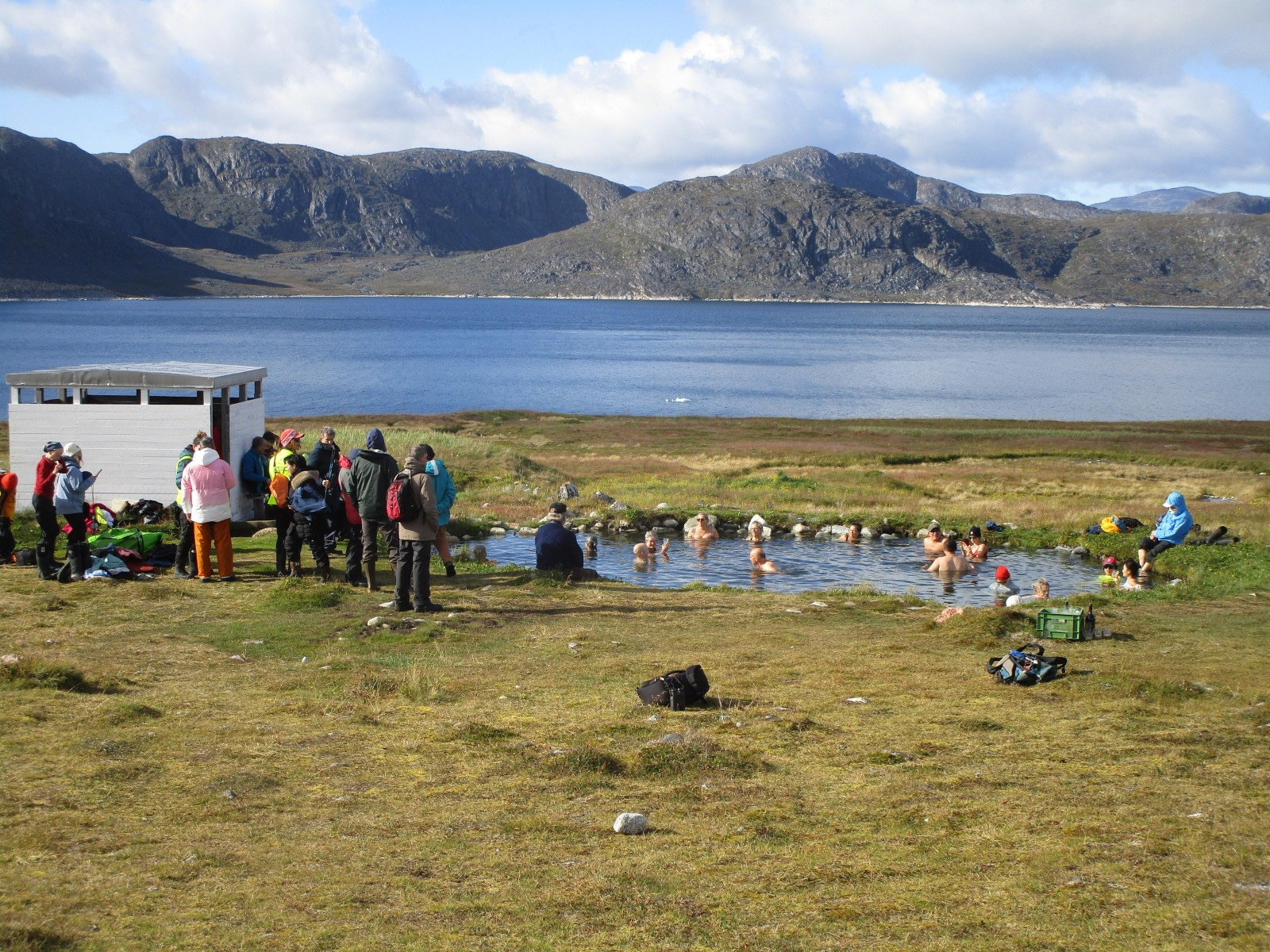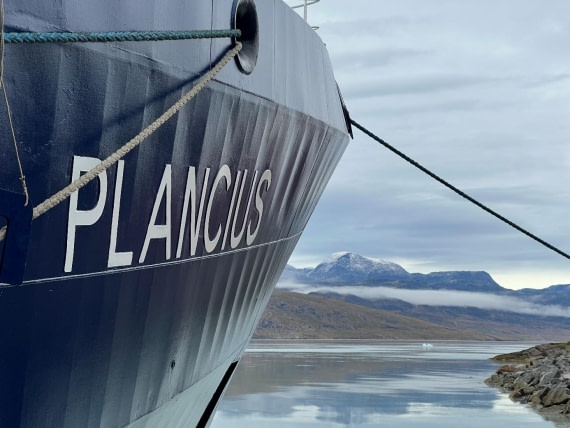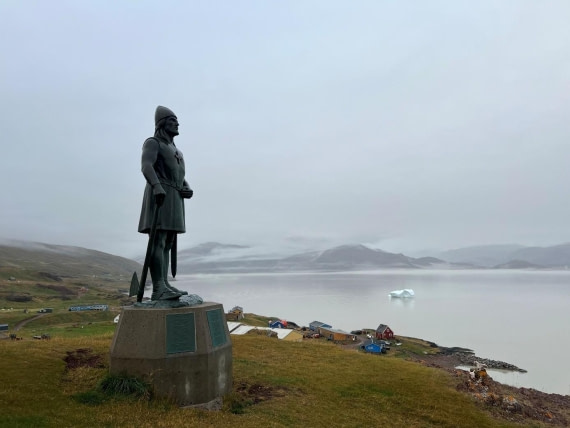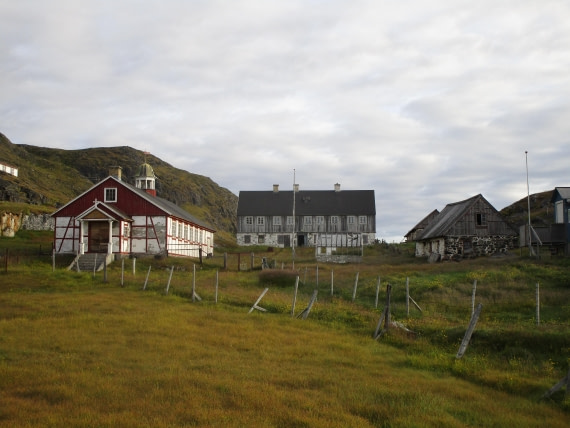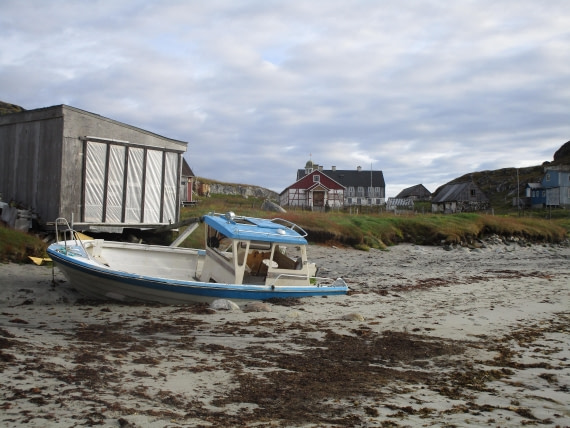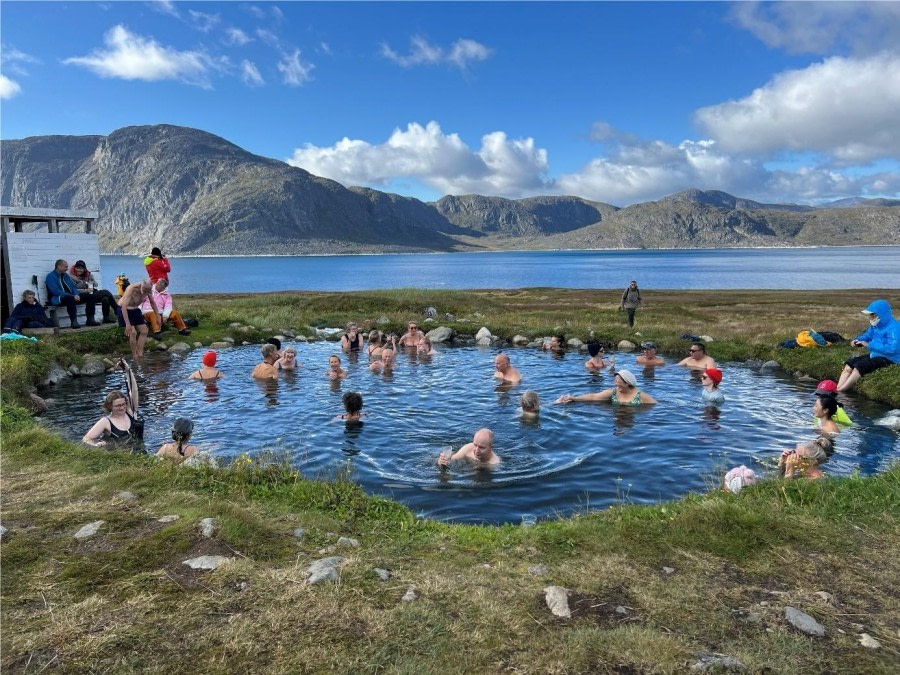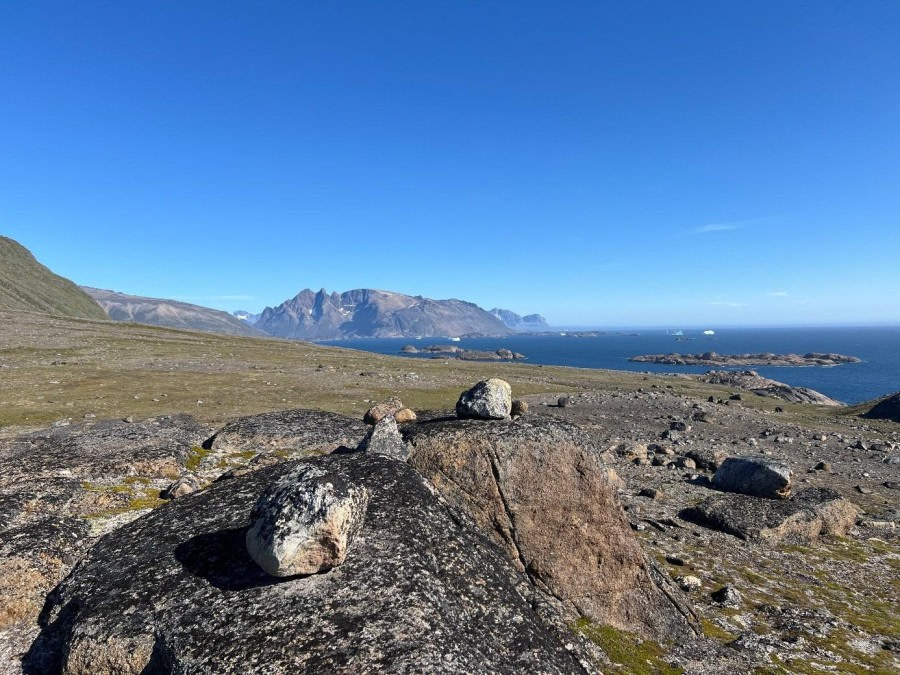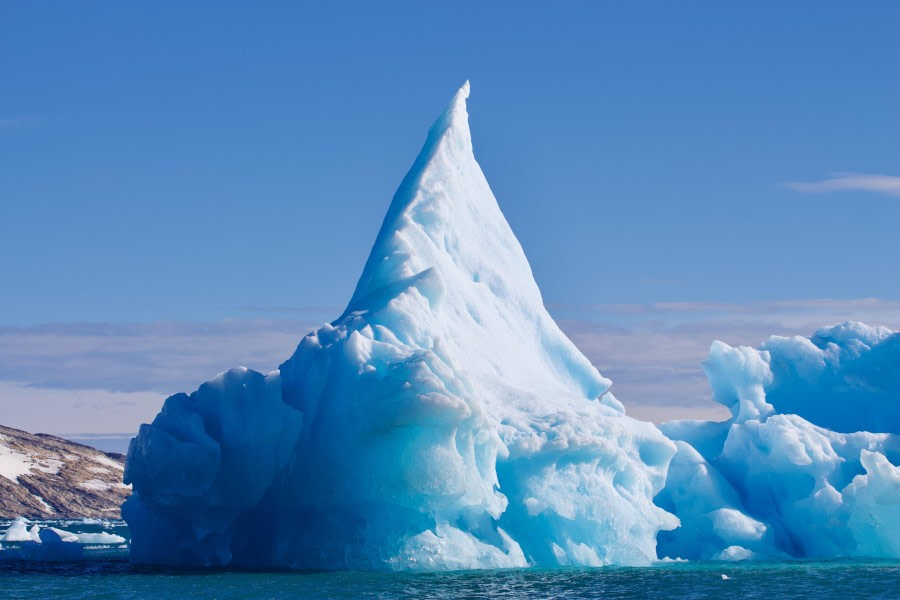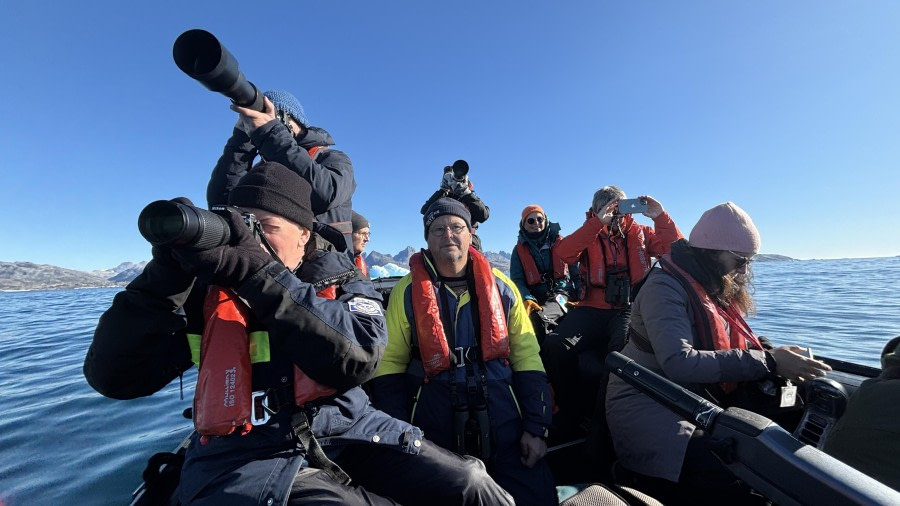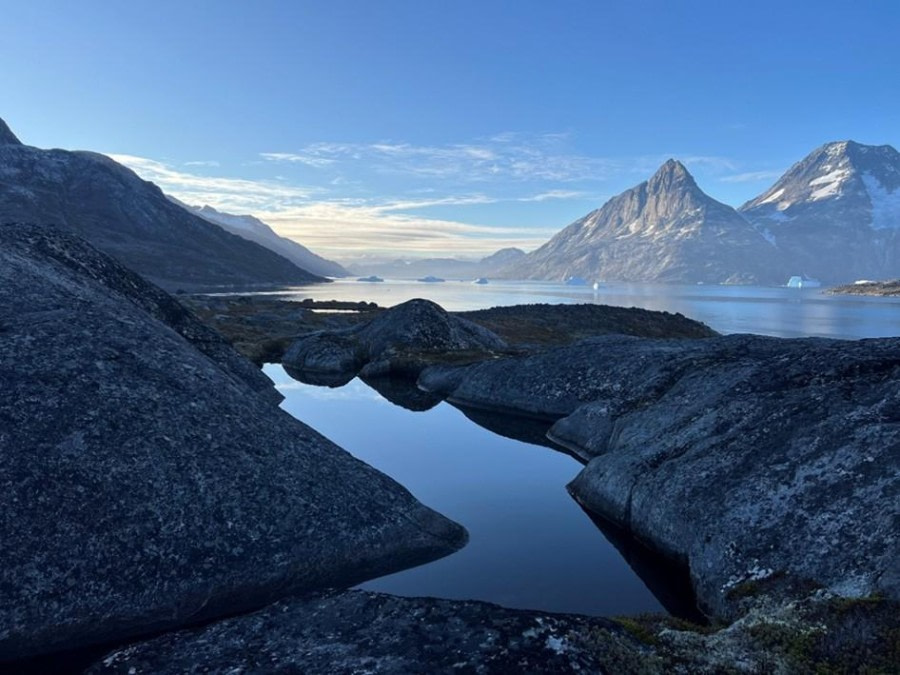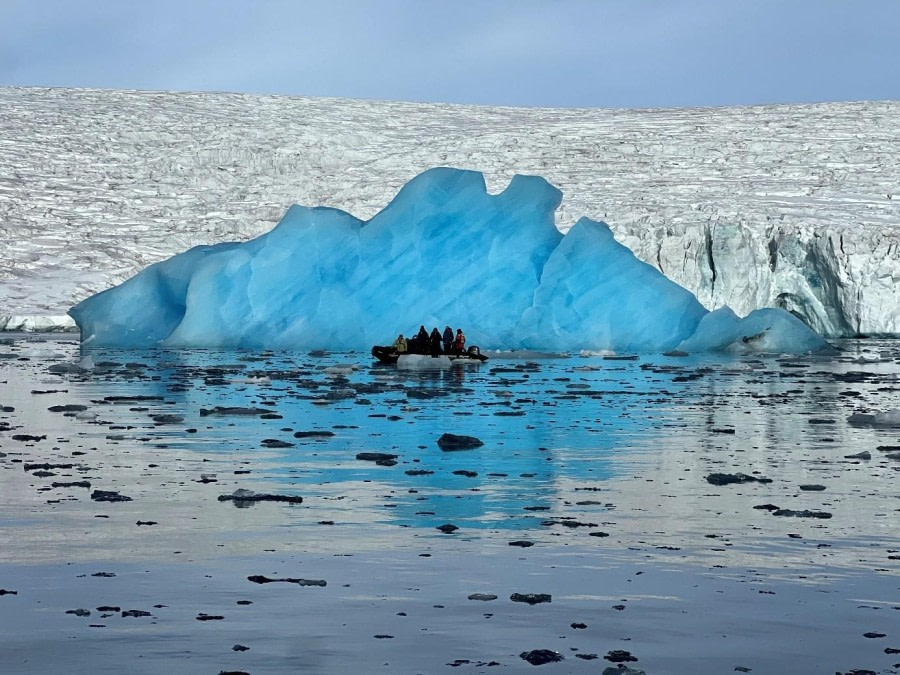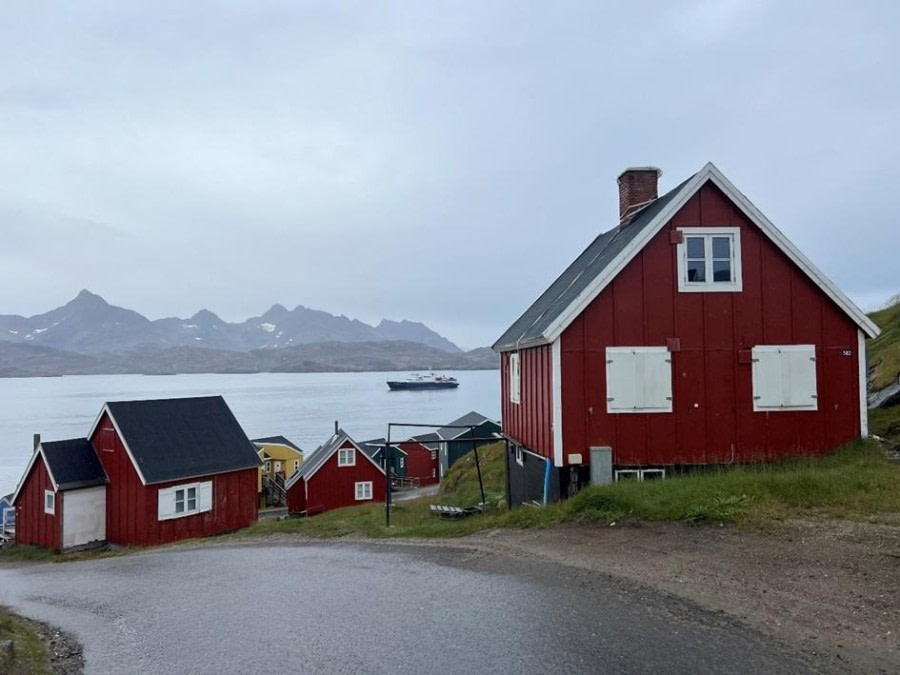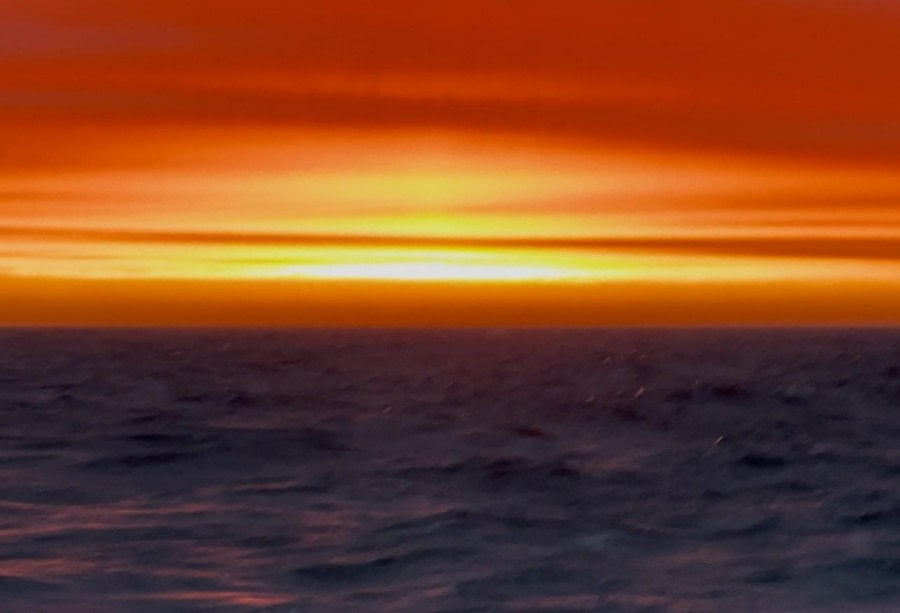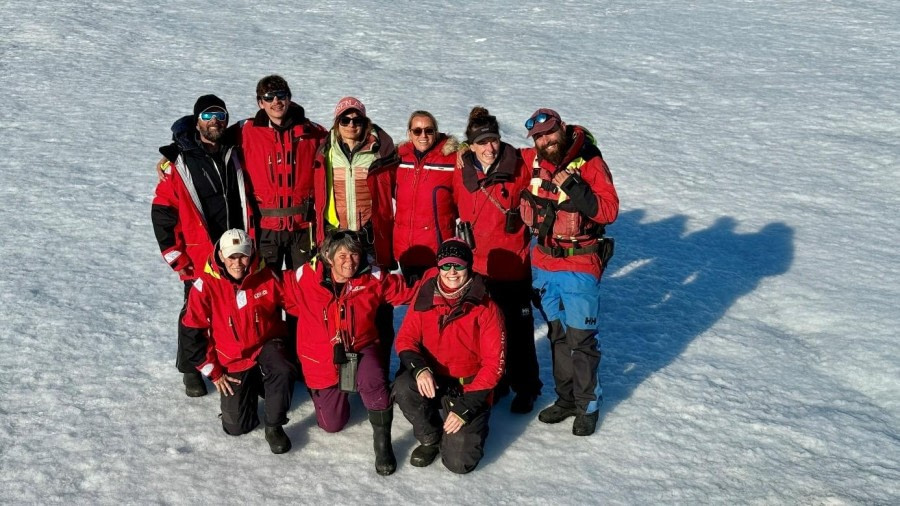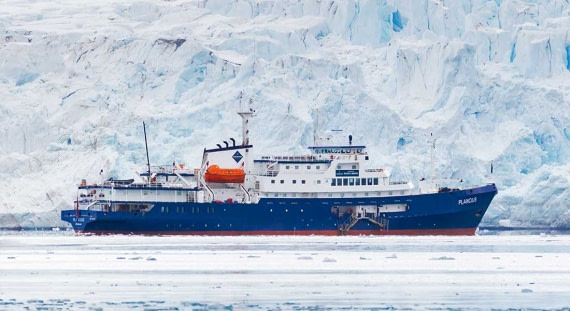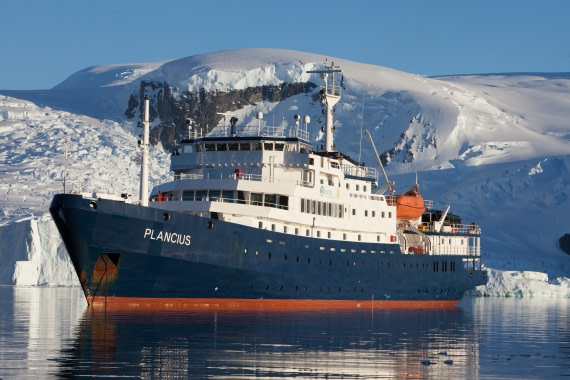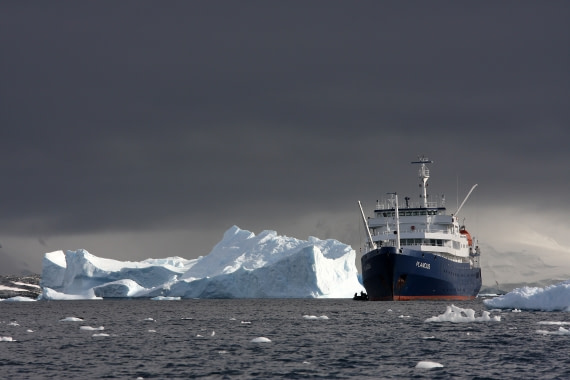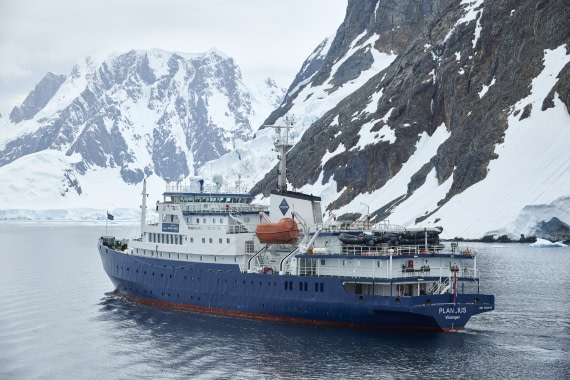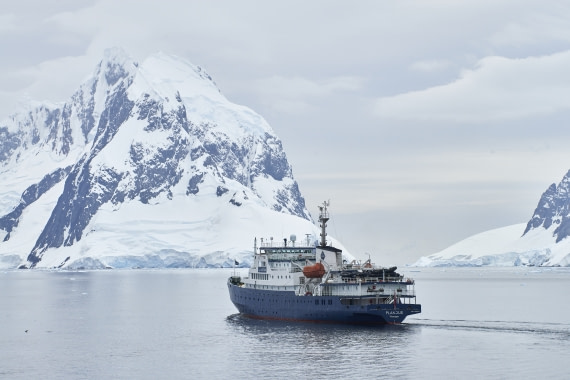| Date: | 02.09.2025 |
| Position: | 60°57.6’N / 045°39.7’W |
| Wind: | E1 |
| Weather: | Fog |
| Air Temperature: | +3 |
Our long-awaited voyage in South and Southeast Greenland began today with the embarkation of our international group of passengers in Narsarsuaq. Guests had travelled from all corners of the globe to join us, and although the weather greeted us with steady rain, the embarkation itself went remarkably smoothly. Thanks to the sheltered small port, everyone was able to board Plancius comfortably and without delay.
Once on board, we settled into our cabins and gathered in the lounge for the mandatory safety briefing. Afterward, another important briefing followed, ensuring that everyone was well-prepared for the days ahead. With our first dinner together served in the dining room, the atmosphere quickly became lively and filled with anticipation for the journey to come.
The evening program held a special highlight: our very first landing at Brattahlíð, today known as Qassiarsuk, the site of Erik the Red’s settlement. Around the year 985, Erik the Red established this farmstead after being exiled from Iceland. It was from here that the Norse began their exploration of Greenland, and ultimately, the voyages to Vinland in North America.
During our visit, we explored the reconstructed longhouse, which gave us a glimpse into the daily life of the Norse settlers. We also visited the small church, remembered as the first Christian church built on the continent, linked to Erik’s wife Thjodhild. Finally, we stepped into the museum, located in the former home of Otto Frederiksen, the founder of modern sheep farming in Greenland. This added a fascinating modern layer to the historic setting, bridging past and present life in the settlement.
By the time we made our way back to the landing site, the light had faded, and dusk was settling over the fjord. Returning to Plancius, we were tired but deeply content. It had been a full and fascinating first day, and we fell into bed with excitement for the voyage ahead.
